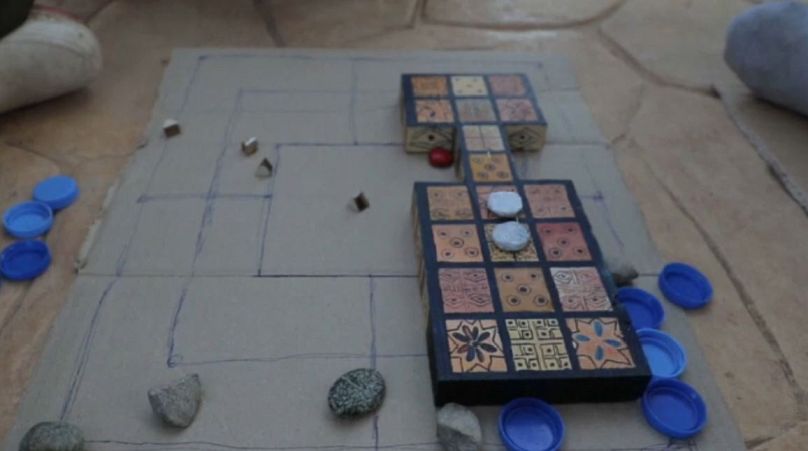Once played by Egyptian Pharaohs and Mesopotamian Kings, the Royal Game of Ur is given a new lease of life in Iraq.
An ancient board game which once entertained kings and commoners from Sri Lanka to the Mediterranean is making something of a comeback in Iraq.
The modern rediscovery of the game came in 1922_,_ when British archaeologist Sir Leonard Woolley uncovered five gameboards during a dig at the Royal Cemetery of Ur, in what is now Tal al-Muqayyar in southern Iraq. The boards, shaped like an elongated 'H', were dated to 3,000 BCE and, with no clues as to the game's contemporary name, it came to be known as the Royal Game of Ur.
Along with a name, Woolley's discovery was also lacking a rulebook and it wasn't until the 1980s, when British Museum curator Irving Finkel translated a clay tablet written by a Babylonian scribe in 177 BC, that the game started to make sense (see below).
Thanks to similar boards unearthed in locations from Cyprus and Crete in the West, across the Middle East all the way to Sri Lanka in the East, we now know the Royal Game of Ur was hugely popular in much of the known world at the time. Ur-like boards were even found buried next to ancient Egyptian Pharaoh Tutankhamun (mid 14th Century BCE) and etched into pillars in the palace of Assyrian King Sargon II (8th Century BCE).
The popularity of the Royal Game of Ur eventually waned and by the early Middle Ages it had been replaced by - or perhaps evolved into - games such backgammon, which have survived to the present day.
Now, however, Ur is being played again. British archaeologist and lecturer Ashley Barlow asked Iraqi craftsman Hoshmand Muwafaq to recreate a wooden Ur board, complete with ornate decorations from the game's 'golden age' in the Mesopotamian period.
"The board itself, with its Afghan Lapis lazuli and Pakistani carnelian (gemstones), is testament to a globalised world connected by traders, merchants and craftsmen," Barlow told AFP.
By reviving the game back in its birthplace, he hopes Iraqis can move past recent decades of violence to build an identity based on a shared ancient past.
"We want to reintroduce and re-educate people in their Mesopotamian history, something they can be really proud of - something that unites people rather than divides people," he said.
Having re-introduced Ur to northern Iraq, Barlow hopes to spread it further south, to larger Iraqi cities such as Baghdad and Mosul.
The rules of the Royal Game of Ur
Ur is a two-player game, with each player starting with seven chequers-like discs. The board appears as below and to win, a player must move all his discs around the board. The number of spaces a disc can move is determined by pyramid-shaped dice. Player A starts and finishes on one side of the board, with Player B starting on the other, and both must move up (or down) the central column, which is shared by both players. If Player A's disc lands on a square that is already occupied by one of Player B's disc, A knocks B's disc off the board, forcing it to start again from the beginning. With every dice roll, a player can either move one of the discs already in play or introduce another of his or her discs onto the board. This introduces an element of strategy to the gameplay.
It would appear the Royal Game of Ur was more than just a way to pass the time: chips found with one set of the game suggest they may have been used for gambling.
What's more, the tablet translated by Irving Finkel makes predictions for players landing on certain squares, such as forecasting making an acquaintance, gaining strength or even coming across a particularly fine beer. Evidence that the preoccupations of board game amateurs have not changed over the millenia.












